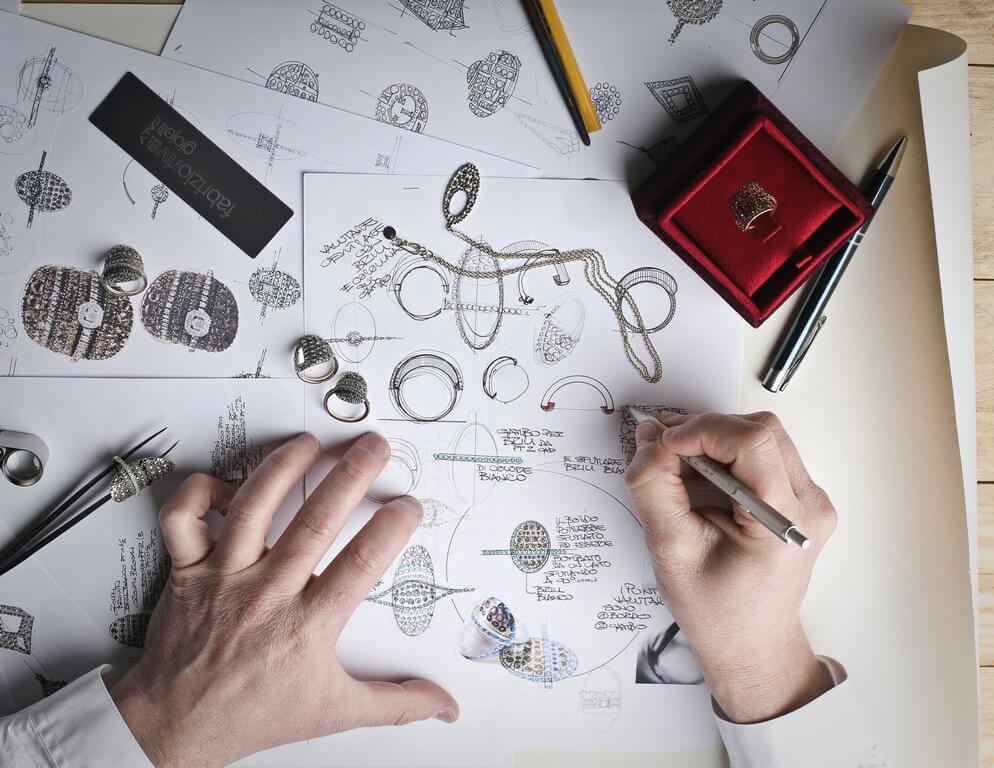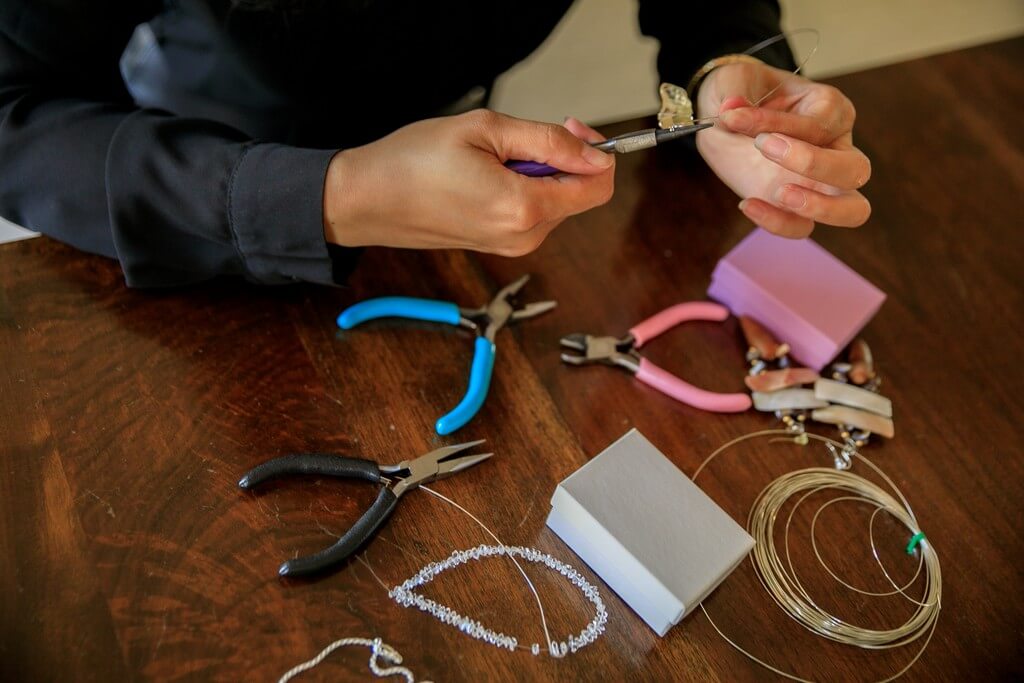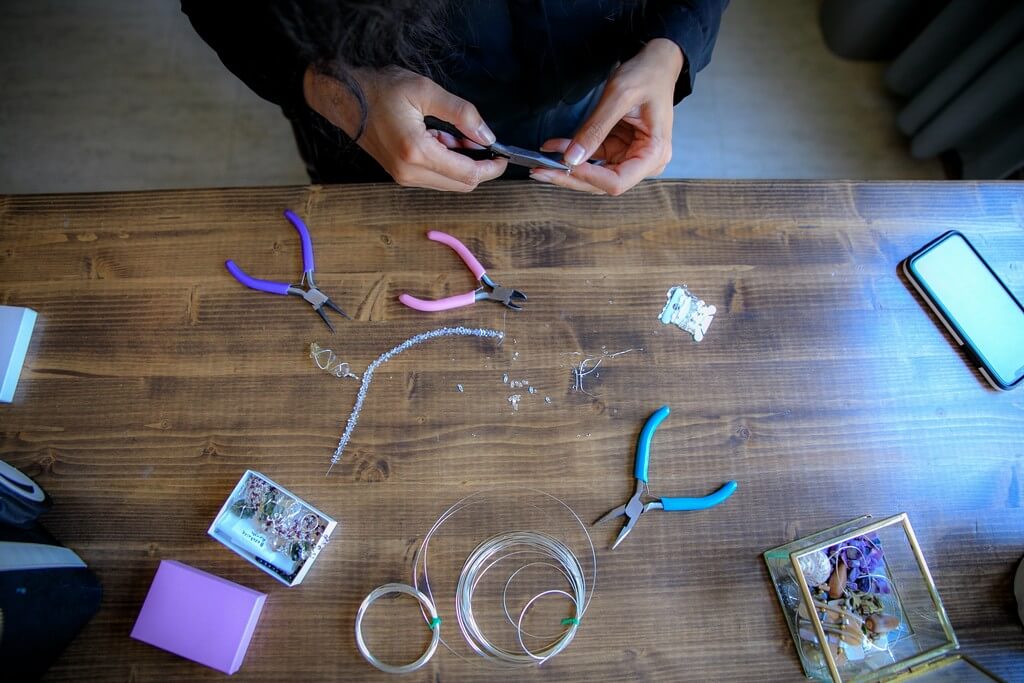Jewellery design – Student essentials.
07/05/2022 2022-05-07 13:26Jewellery design – Student essentials.
What do you need inside your jewellery design tool kit? Here are the 14 essentials every jewellery design professional should own to be a pro and ace their time at the classes.
Beginning your professional course in jewellery design? You’ll need to get set up with all the right equipment. With so many finicky little tools, it can be tricky to decide which ones you’ll get the most use out of. We at JD Institute of Fashion Technology, have provided a list of everything you need when putting together a basic jewellery kit.
You’ll want to invest in some professional items that will allow you to learn and work seamlessly but a fair warning, don’t invest until you know what you are good at and how you want to design your jewellery. To ace in your classes and to be an absolute know-it-all on any project that gets assigned during your time with us.
1. Sketchbook – A sketchbook is an obvious thing that is needed; however, you need a sketchbook as a jewellery design student. Lastly, marker paper because this paper can bring out the true tones of the markers as well as handle the bleeding through the back issue. These are for when your hand drafting your floor plans or sketching out perspective rooms.
2. Drawing pencils – Drawing pencils are your new best friends in jewellery making, as you will not be directly trying out patterns with metals and strings. You will need a range of H, HB, 2H, 4H, and 6H pencils to chalk out the pattern and learn how different types of designs work.
3. Pliers – Essential for working with wire, having a selection of different shaped pliers will enable you to create any kind of piece you desire. Whether you need to straighten a wire, create a loop or form a sharp angle. For a starter kit for a jewellery design student, you will need round nose pliers, snipe nose pliers, flat nose pliers and half round pliers. If you’re after a professional finish, these crimping pliers create small and neat crimps every time.
4. Files – Along with your pliers, you will need files. The next component in your student jewellery tool kit is a set of files. You’ll need some files to ensure your designs are finished to the highest standard and are safe for wearing. You will use it for smoothing sharp edges on a pair of earrings, for filing the rough edges on a ring that you crafted!
5. Soldering Equipment – One of the most common techniques in jewellery making is soldering. So, getting stocked up on some soldering supplies is a great place to start when working through the equipment needed to make jewellery. Wire cutters, tweezers, reverse action tweezers and safety glasses
6. Jeweller’s Saw – Cutting metal is inevitable in the jewellery making industry, so be sure to get yourself a jeweller’s saw and plenty of saw blades before you get started. Adjustable saw frame and pack of saw blades.
7. Bead Boards – This helpful bead board allows you to plan and create your beaded designs easily and even while on the go. It has three U shaped channels to help you lay out your design, 6 recessed sections to house your beads and findings and its flocked surface also prevents your beads from rolling away. A bead mat is essential for jewellery design students. Work on the mat to prevent your beads from rolling away, it’s bright colour also makes it easier to see what you’re working on.
8. Thread Snips: Use for cutting beading thread and thin wires and Bead Stringing Needles is thin and flexible with a collapsible eye, which makes them useful for easily stringing beads with small holes.
9. Bezel Rocker: A bezel rocker is used for creating a neat and even result when setting a stone with a bezel. Once the stone is in the bezel, simply use the bezel rocker to push the metal over the stone, working from all sides and gently rocking back and forth with downward pressure until the stone is nice and secure.
10. Pusher: Pusher is used for pushing claws and bezels over stones during the setting process. It has a square, metal rod that is slightly rounded on the corners and polished on the end to minimise any marks during setting.
11. Burnisher: A burnisher is used to create a high shine and a professional finish on your jewellery after the setting process. It can be rubbed over metal to smooth and shine as well as removing marks that have been caused by the setting process.
12. Ring Clamp: This is such an essential workshop tool! Use this ring clamp to set rings and other small pieces which are difficult to hold.
13. Miscellaneous Tools – Then there’s all the other little extras you’ll need along the way. Whether it’s a ruler for measuring your designs or something a bit more specific. These tools will make up key components of your beginners’ jewellery making tool kit.
If you want to be a part of this classy industry, you have the choice of a range of Jewellery design courses in a college that ticks all your little boxes. Check the entry requirements, give them a call or walk-in and discuss your options.













